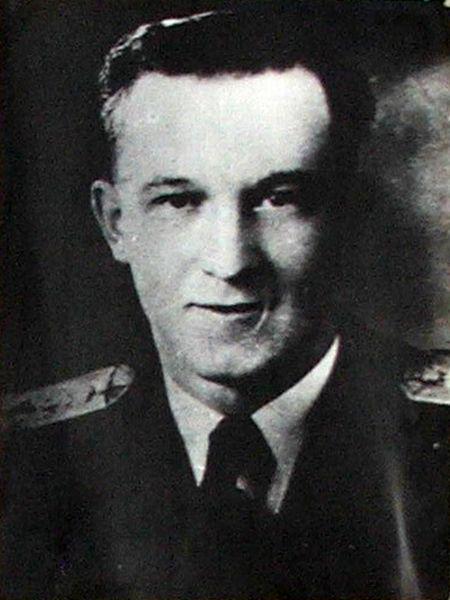
When the Costa Concordia ran aground in January 2012, its captain, Frencesco Schettino, became a household name. Instead of staying abroad and helping his passengers, he decided to flee to safety, and earned himself the condemnation of the world’s media as well as his professional colleagues. More than seventy years ago, however, a Slovenian navy lieutenant went down in history for a very different response at a time of crisis – and his name eventually became synonymous with bravery and self-sacrifice.
Sergej Mašera was born in the town of Gorizia in 1912. Just three years later, Gorizia found itself on the frontlines of World War I, and his family was forced to flee the area. After the war, the town became a part of Italy, and the Slovenian community there began to undergo a campaign of forced Italianization. Because they could only have have enrolled their children in Italian-language schools if they chose to return, the Mašera family decided to stay in the newly-created Yugoslav state.
In the 1930s, Mašera graduated from the Yugoslav Naval Academy and joined the navy. When World War II broke out, he was a corvette lieutenant on the Destroyer Zagreb in Montenegro’s Kotor Bay.
As Italy invaded Yugoslavia in April of 1941, the crew of the Destroyer Zagreb found themselves under sustained aerial attack from the Italian combat aircraft. The Yugoslav military forces were quickly overpowered by their superior Axis counterparts, and on April 16, the commander of the Yugoslav fleet formally requested a truce. The Yugoslavs had been defeated, and as stipulated by the terms of the truce, most of the crew left the Destroyer Zagreb.
For Mašera, however, the truce was an unacceptable humiliation. He didn’t want the ship to be turned over to the Italians, whom he had blamed for the loss of his childhood home. Mašera, along with lieutenant Milan Spasić, decided to sabotage the ship to prevent it from being taken over by the Italian forces.
On April 17, 1941, the Destroyer Zagreb exploded and sank in the Kotor Bay. Investigators quickly discovered what had happened: Mašera and Spasić had placed explosives in two carefully selected areas aboard the destroyer to ensure its complete destruction. They were both killed instantly. Spasić’s body was soon recovered, while only fragments of Mašera’s body were ever found; several had been taken by the Italian occupying forces when they took full control of Kotor Bay.
At the time, the sabotage made international headlines, but for a time after the end of the war, Mašera and Spasić were all but forgotten. Eager to promote its own heroes, the Communist regime was not entirely comfortable with the two men who died serving the non-Communist Royal Yugoslav Army. It wasn’t until the 1960s that Mašera and Spasić began to receive official recognition. A number of streets and monuments were named after them, and in 1967, the maritime museum in Piran was renamed the Sergej Mašera Maritime Musuem.
Today, the museum that celebrates Slovenia’s seafaring tradition still proudly bears the name of a hero whose selfless courage exemplified the very best in naval conduct.


































































